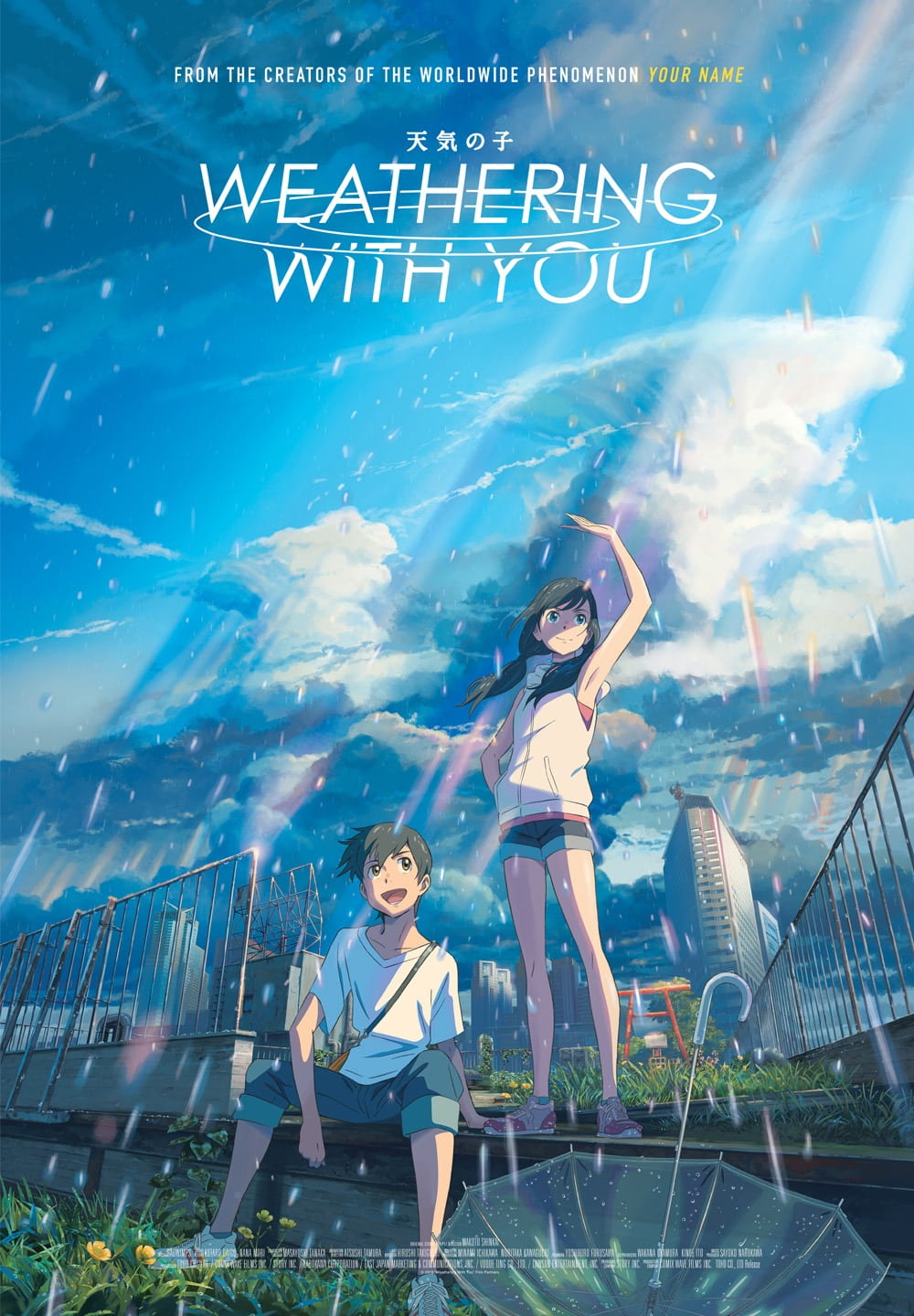Anobb Hyancinth
Staff Writer
Trying to escape a busy week, I found myself rushing to the theater on a gray Thursday afternoon.
It thundered and rained sporadically and I was barely able to get inside without getting wet.
The movie was a bit empty, having shown for weeks already, making darkness the only thing keeping me from my seat.
Once I sat down, seeing the constant rush of rain from the opening scene, tears ran down my cheek.
Granted that all may have been unrelated, those moments perfectly summarize the energy of Makoto Shinkai’s new film, “Weathering With You.”
The film twists current day climate anxieties to tell a tale about choosing love against the world while demonstrating that an animated feature can have just as much merit as your typical blockbuster.
Opening up, the film focuses on a young boy named Hodaka, taking a ship to Tokyo to hopefully run away from his previous life.
During a storm, Hodaka finds himself rescued by an older man named Keisuke, who he later goes to work for in order to survive in the city.
Tokyo is shown to be always raining, and due to that, Hodaka is forced to investigate some urban legend associated with the phenomena under the guidance of Keisuke’s niece.
While living with Keisuke and investigating Tokyo’s rain, Hodaka runs into a girl named Hina who happens to have the ability to make the rain stop.
The duo decides to monetize her ability and quickly finds themselves having to choose between their own relationship or a Tokyo without rain.
While not being the best of Shinkai’s work, the film manages to be heartwarming and leaves a bit of food for thought. Shinkai goes out of his way to paint a really accurate portrait of Tokyo and avoids leaning on both eastern and western tropes.
Despite the weirdness of his story at times, Shinkai sought to create an animated movie that separates itself from the medium’s stereotypes and succeeds in becoming a decent piece of cinema.
One of the biggest things that film does is create a very different narrative for climate change and human nature itself.
Without spoiling, the movie sort of presents the audience with a different answer to the trolley problem, whether one life should be sacrificed for the many.
Shinkai takes a very unconventional route to solve this problem but uses his answer to make a larger point about climate change in general. Is it really one man’s job to save the climate?
Is climate change just the Earth’s way of returning itself to form? These questions are asked, but intentionally never answered.
“Weathering With You” makes it clear that it wants its viewers to value the experience and its characters over the grand scheme of things.
At the end of the day, Shinkai asks the audience to find joy in their own lives before trying to save the world.
I cried during the opening scene of the film. Not just from the emotion elicited by the scene, but because it served as a reminder of why this medium is so special.
“Weathering With You” is a masterwork of emotion, especially in a way that most live-action films cannot replicate.
Animation, when used right, can drag the viewer’s worlds that defy the physics of typical reality.
These movies can use their bizarre environments to teach us about our own.
So when looking for a new film to watch on the big, silver screen (or the little, more digital one too,) don’t skip over Shinkai’s “Weathering With You.”
hyac9@mail.broward.edu
